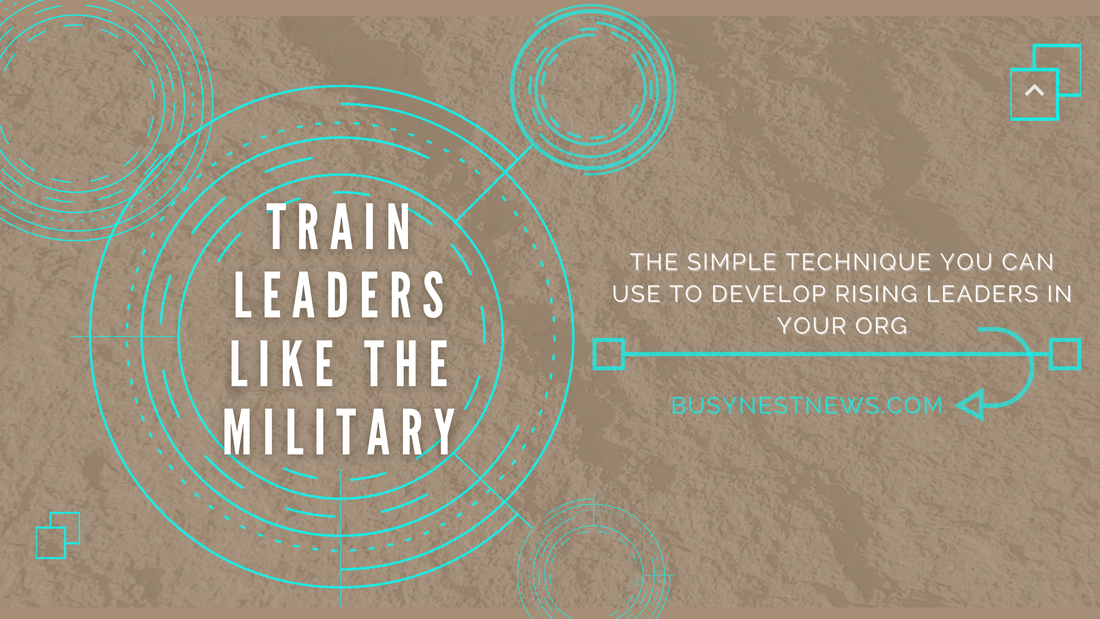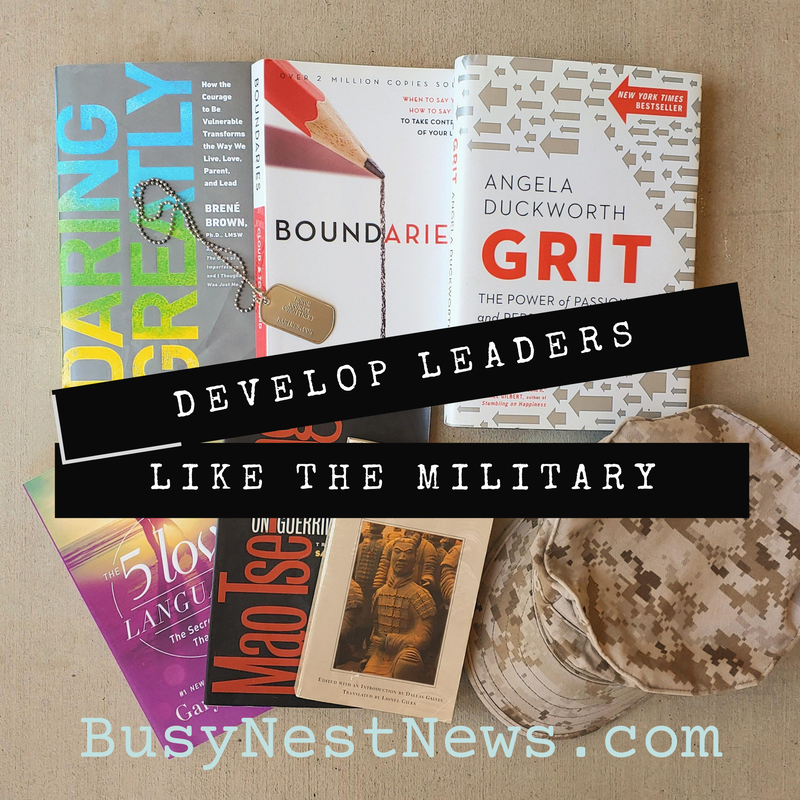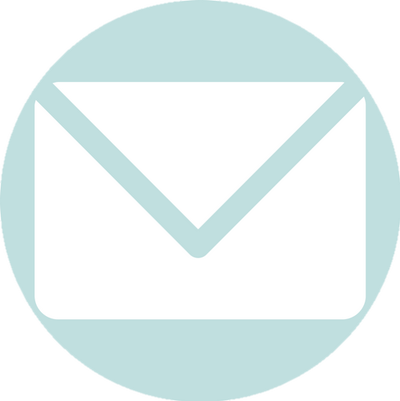|
By Brianna Updated 10/22/2020 When people think about military training, they usually picture some version of basic training. And why wouldn’t they? The vast majority of military movies spend a large amount of time on the protagonist getting through boot camp. Basic training is a big deal, but the truth is that it’s just the beginning (hence the word "basic"). After boot camp, the training continues in the form of schools, field ops, distance learning classes, and ongoing mentoring. But there’s one type of training that is key for developing leaders that's often overlooked by the casual observer of military life. The great news, though, is that you can use this technique to develop yourself as a leader, as well as other aspiring leaders in your team. This little-known method of leadership development is a great reading list. Now, if you’re associated with the United States Navy or Marine Corps, this will not be a big shock to you. Both of those branches have fine-tuned reading lists which they push pretty hard. Not reading the books expected of you can result in getting passed over for promotions on the basis that you are not actively pursuing your professional development. Likewise, reading outside of your assigned chunk of the list makes you look like a real motivator. The Army and Air Force have also published reading lists from time to time, but they’re not as easy to locate or pushed nearly as hard as the Navy’s and Marine Corps’. So what's on these lists, how do they work, and how can you benefit from this approach to leadership training? Reading List StructuresThe Marine Corps breaks its list down by rank*. Each group of pay grades has several books assigned to it. There is some overlap in this list, as junior officers and enlisted members will have some of the same titles, which is reflective of their shared entry-level status. Likewise, senior enlisted readers have books in common with the officers' portions of the list. Reading above and below one's assigned list is encouraged. The full list can be found here. *This structure has changed. Read this article about the latest version of the Commandant's Reading List. The Navy Breaks their list down by theme. Their themes are: The Canon, Core Attributes, Naval Power, High Velocity Outcomes, Navy Team, and Partnerships. If you're curious about just what those loaded headings actually mean and want to check out the Navy's reading list, click here. They don't just publish a series of PDFs for their list; the website is pretty spiffy. Why Use a Reading List?Some of the most important factors in building an organization that is adaptable, resilient and adaptable to change are also the most intangible. We say we value leadership, innovative thinking, and a culture that people are eager to join, but it's impossible to instill these qualities through death by Power Point. By encouraging the team to read from a core list of books, you're teaching them about your culture and giving them guidance in their personal and professional development. When everyone is reading the same books, they have a shared vocabulary to use and a shared worldview to work in. In short, reading lists keep everyone in your org on the same page. How to Build a Reading ListYou could grab a reading list developed by another individual or organization and make your team read that, but the real value of a professional reading list is in directing your team's development through reading. To do that, it's best to build your own list. You need to know who your culture attracts, who you want it to attract, and what your organization's core values are. Much of this will be the same from one company to the next, but there is a LOT of room for differences, too. So how do you build a list? First, start with the books you think everyone should read. Just start writing them down! You might already have more titles in mind than you think. If you only have one or two, start looking for recommendations. Ask friends and colleagues what books they think are interesting or important, especially in your field. Look up suggested reading lists on blogs and watch reviews on YouTube. Also, check the books you've already read! The benefit of nonfiction books is that a good one will refer to other books by other people on similar topics. This might be a quick point in the text itself, or a simple citation at the end or in footnotes. You don't have to have read every single book on your list (but you should make it a goal to do so), but check out the reviews on it before recommending or requiring your team to read it. What themes should I include?Definitely read across genres and industries! We like to reach back to ancient philosophers, as well as the latest scientific research. If training, mentoring, or developing team members is part of your job, read a few parenting books! The dynamics are not the exactly same, but it is shocking how much overlap there is between the skills that make a good parent and a good coach. Here a few headings to get you started, but your industry will dictate others you can add (just like how the Navy and Marine Corps read about world history and diplomacy, but you might not need to).
Fiction or Nonfiction?The short answer is both. The military reading lists contain plenty of books about military history, diplomacy, and leadership, but there are novels, too. A true scholar realizes that some of our most profound truths can be revealed to us through works of fiction. When a story is set almost unfathomably distant from us into the past or future, it’s easier to let go of our assumptions and absorb truths about what it means to be a good or bad leader. Not all are about the military, either, such as works like “Ready, Player One.” Honestly, some of my favorite marketing lessons come from novels written by a woman who used to work in that industry. Her books aren't about marketing itself, but many of her characters work in marketing and design, or bump up against that space. Those books also make great case studies about leadership, boundaries, mentorship, and self improvement. If you're the kind of person that likes to mull something over on a long commute or in the shower, think back to your favorite novels and ask yourself if one reason they resonate with you is because they contain valuable lessons your team could benefit from. There are also several “fiction” works based on people’s lived experiences of the Korean and Vietnam wars. I put fiction in quotes, because sometimes it’s genuinely a fiction work set in the context of a real war, but sometimes the work is a straight-up memoir with tiny details changed to keep the authors from getting in trouble for criticizing the establishment types who ran those wars. The fancy literary term for this genre is roman à clef. In the civilian world, some thinly-veiled memoirs and novels that blend fact and fiction (or the stories of several people blended into one narrative) include "The Devil Wears Prada," "The Help," and "Fear and Loathing in Las Vegas." They're fiction on the surface, but you can learn a lot about the real worlds they're set in by reading them. There might be books like that written by people in your industry, too. Using your listYou've got your list, or at least the start of one. Now what? You can use your list a number of ways. One option is to incentivize your team to read from the list and suggest titles to add. You could quietly post your list on your door or include it in a newsletter. Even if you don't publish your list, you can still work on it for your own development. Perhaps someday you'll be asked in an interview what books have influenced you. No matter how you use your reading list, it will be worth developing for yourself and others.
0 Comments
Leave a Reply. |
AuthorsAriel and Brianna are friends who met while working in a library. Now they collaborate to develop life-enhancing book club experiences. Archives
June 2023
Let's keep in touch!Categories
All
|






 RSS Feed
RSS Feed